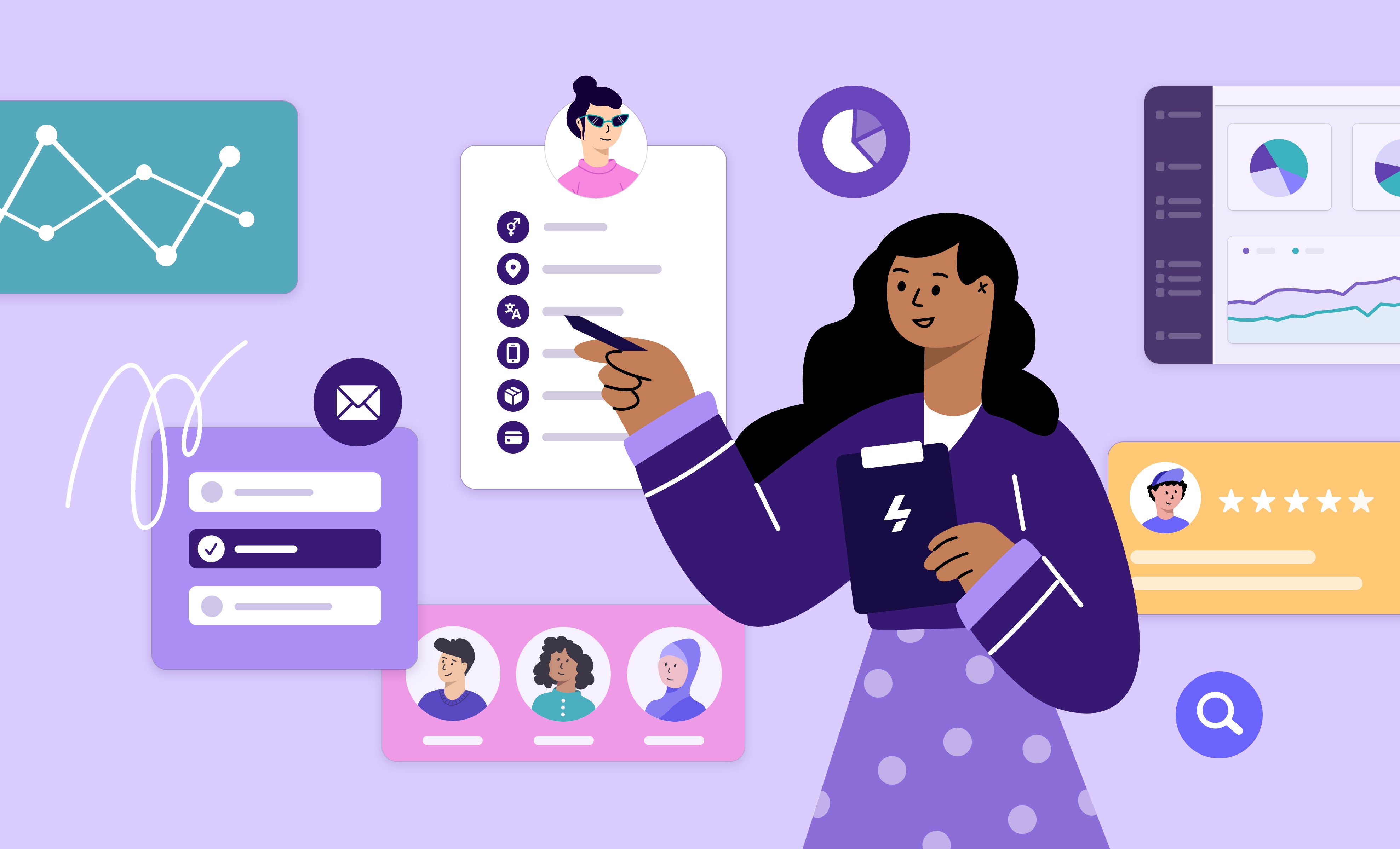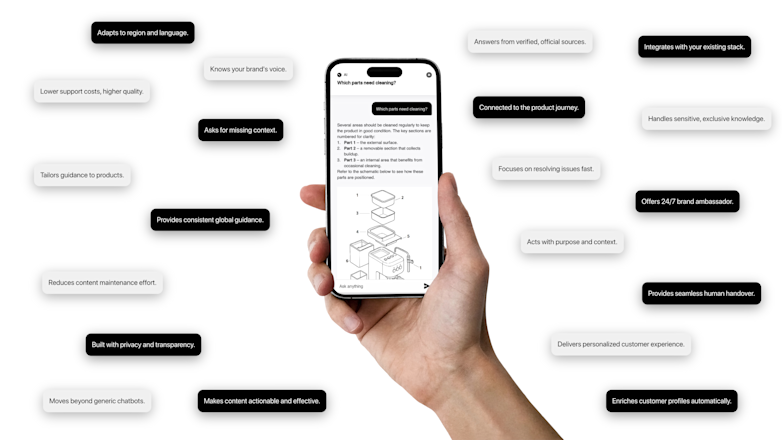
Customer data is an essential resource for any business seeking to optimize operations, improve customer experience and increase sales. Businesses must collect and manage customer data to understand consumer behavior, preferences, and interests. When properly analyzed, customer data can provide invaluable information that helps make informed decisions and gain a competitive edge.
Unfortunately, many businesses need help to collect and manage customer data effectively. An organized system for gathering, organizing, and analyzing customer data leads to an efficient process which can result in missed opportunities or even bad decisions that could damage the business.
While customer data collection and management may seem complicated, the right strategies and tools can simplify the process. Making a great plan doesn't require you to be an expert in data science. This comprehensive guide will give you the knowledge and tools necessary for gathering, organizing, and managing customer data effectively and efficiently.
What's customer data
Customer data is any information businesses collect about their customers, including demographic information, purchase history, and preferences. Even though each data point can offer insightful information, they become even more potent when combined. With customer data, businesses can better understand their customers' behavior and needs to provide more targeted services and products.
Additionally, using customer data to segment your audience successfully allows you to target your marketing initiatives more. Businesses can ensure that the appropriate audience receives their message at the appropriate time by effectively segmenting their consumer base.
Types of customer data
Customer data can take many forms and provide essential details about a customer's behavior and preferences. By understanding the different types of customer data available, you can create a comprehensive approach to customer data collection and management.
The four key categories of customer data to take into account are as follows:
1. Demographic information
Demographic information is the most basic form of customer data. It describes who your customers are and what they look like. Common types of demographic information include:
Age
Gender
Location
Income level
Educational attainment
Language preferences
Nationality
Ethnicity
Marital status
Occupation/Profession.
This type of data is invaluable for businesses when it comes to segmenting customers and understanding who their target audience is. The data can help to personalize products, services, and marketing campaigns.
2. Purchase history
Purchase history is a type of customer data that captures details about previous and current purchases. Businesses keep track of this data to learn more about the purchase habits of their clients. This data can help forecast potential customer needs and inform marketing strategies. Here are seven types of purchase history data that can be collected and managed:
Transaction dates
Product details
Payment methods
Shipping information
Promotions used
Returned items
Refunds received or pending
3. Preference data
Preference data is another crucial type of customer data that businesses should consider. It is information related to the customer's preferences and interests. Customers' preferences data may include the following:
Product reviews and ratings
Past customer service interactions
Customer feedback survey responses
Website activity logs
Website click-through data
4. Behavioral patterns
Behavioral patterns refer to data on how users interact with products and services. Collecting and analyzing this data can help you better understand your customers' needs and wants and how they interact with your products. Some of the behavioral patterns that are commonly collected include:
Time spent on pages
Site clicks
Downloads
Clicks within emails
How to collect customer data
Collecting data from customers is an essential part of any successful business. The right data may help businesses understand their consumer base better and utilize that understanding to guide their marketing, product development, and other activities. A comprehensive and effective approach is critical to successful customer data collection.
Layerise offers an easy-to-use platform for collecting, storing, and analyzing customer data. Their comprehensive data collection solution provides businesses with geographical, demographical, and behavioral variables to get an in-depth view of their customers. It allows businesses to understand what their customers are doing and how they interact with the company's products and services.
You can use various methods to collect customer data. Combining traditional data collection approaches with more sophisticated ones helps businesses better understand the requirements and preferences of their customers.
Some of the most popular techniques for gathering data include the following:
1. Surveys
Surveys are the most common method for collecting customer data. Businesses can use surveys to gather information on customers' preferences, interests, and overall satisfaction with a product or service. Surveys can be used online and in-person, allowing businesses to get feedback from a wide range of customers. Surveys can also help collect customer support feedback which can help companies identify areas of improvement.
Survey responses provide valuable data businesses can use to inform their product development, marketing strategies, and customer service initiatives. Companies should strive to create surveys that are easy to understand so customers don't feel overwhelmed by too many questions. Businesses should also make sure that surveys are secure and private so that respondents feel comfortable sharing their genuine opinions. Surveys help to collect customer data quickly and accurately.
2. Focus groups
Focus groups involve a small group of customers invited to discuss their experiences with a product or service. These groups provide insights into customer behavior, as they can share their experiences in an open and honest forum. Companies should strive to create focus groups representing various customers to get a complete picture of the customer base.
You can use them to gather important feedback on product design, customer service strategies, and more. Businesses should ensure that the questions they ask are simple and easy to understand, as this will ensure that participants can provide meaningful feedback. Additionally, companies should strive to create a comfortable atmosphere for the focus group participants to maximize their engagement.
The groups provide an understanding of customer experiences and opinions. By leveraging this data, businesses can create strategies for improving customer excellence and deepening customer relationships. Furthermore, insights gathered from focus groups can inform product development initiatives and help companies better understand the wants and needs of their customer base.
3. Analytics tracking
Analytics tracking involves using software to track customer interactions with a company's website and other digital properties. It allows businesses to collect detailed information about customer behavior before and after sales. You can use this information to spot trends, improve marketing initiatives, and create more effective post-sales customer interaction tactics.
Analytics tracking is an excellent tool for collecting customer data in the SaaS industry. Here are some of the benefits it provides:
Detailed insights into customer behavior, including page views, location data, time spent on pages, and interactions with content
Ability to target new customers more effectively with tailored marketing campaigns
Access to real-time performance analytics to identify issues and make adjustments quickly
Improved customer service by understanding user needs better.
4. Social media monitoring
Social media monitoring is an effective method for gathering customer data and understanding their requirements. It allows businesses to understand the topics customers are most interested in, the type of content they prefer, and their sentiment toward brands. Companies can craft more targeted messaging and better engage customers to build trust and loyalty.
Social media monitoring can help businesses identify customer issues that may otherwise go unnoticed, providing an opportunity for a speedy resolution. That, in turn, gives customers a higher level of satisfaction, resulting in better brand loyalty and advocacy.
By leveraging the data gathered through social media monitoring, businesses can create more personalized customer experiences, develop targeted marketing strategies, and craft better customer service initiatives. That will result in improved customer relationships based on trust and understanding.
5. Online forms
Online forms are an excellent way to quickly and precisely capture customer data. They can gather a wide range of information, including contact details, preferences, demographics, purchase history, and more.
Forms can gauge customer satisfaction. They allow businesses to quickly and easily get customer feedback on their product or service experiences. This information is invaluable for understanding customer needs and gathering information about how they view the business.
Forms provide an opportunity to build customer relationships by offering them discounts or other incentives for completing the form. It motivates loyal clients to tell their friends and family about their positive experiences. Moreover, the data gathered can be used to target customers more effectively with tailored messaging, resulting in improved customer loyalty.
6. Email marketing
Many businesses use email marketing to collect customer data. Companies can gather contact details, interests, and preferences through email campaigns. It allows them to tailor their messaging to the individual needs of each recipient, resulting in improved customer engagement.
Email marketing is also helpful in gathering feedback from customers on their experiences. It can send surveys and user manuals, allowing customers to provide their input quickly and conveniently.
Furthermore, data collected through email marketing can segment audiences more effectively by creating specific groups of customers with similar characteristics. By understanding customers' individual needs, businesses can make more targeted campaigns and better meet the expectations of their target audience. That will lead to improved customer retention rates and increased ROI.
Tools to manage customer data
Running a successful business requires effective data management. Businesses need the right tools and resources to ensure customer data is accurately collected and managed. Here are some of the best tools for managing customer data:
1. Layerise
Layerise is the perfect solution for collecting and managing customer data. By collecting first-party customer data during the registration process, it gives you a deep understanding of your customers and their behaviors. This information helps you track customer satisfaction across different platforms, so you can make informed decisions about how to improve your product, and improve the overall customer experience. Thanks to all the data collected about your customers Layerise allows you to create personalized marketing campaigns and suggest the right products to your customers, thus increasing your sales opportunities.
Additionally, Layerise gathers product ratings and integrates them with other public review websites, providing you with a comprehensive view of customer feedback and self-service rates. This helps you increase public ratings and make your product even better.
What sets Layerise apart is its focus on personal communication with customers, rather than relying solely on automated systems. This ensures that customer service representatives have all the information they need to provide personalized experiences and improve your product.
In conclusion, Layerise is the ideal option for collecting and managing customer data. With its comprehensive features and personal touch, it will help take your business to the next level. To find out more, book a demo today.
2. Customer Relationship Management (CRM) software
Customer Relationship Management (CRM) software is a powerful tool that allows businesses to streamline customer data collection and management. CRM allows businesses to gather customer data in one location for analysis. This makes it easier to track customer interactions and identify areas for improvement.
CRM also provides the ability to segment customers into different groups, allowing businesses to tailor their messaging more effectively. Furthermore, it provides strong analytics that can provide information about consumer behavior and preferences. That will enable companies to personalize their approach, resulting in improved customer experiences and better sales results.
3. Data analytics platforms
The use of data analytics platforms to collect and analyze client data is highly recommended. They allow businesses to track customer behaviors, interactions, and feedback to understand their customers' needs better. These platforms provide valuable insights that can be used to identify trends, create targeted offers, and improve customer service. Popular examples of Data Analytics Platforms include Salesforce, SAS Customer Intelligence, and Oracle Cloud Analytics. Features of these platforms include:
Robust customer data management capabilities
Customizable dashboards to quickly visualize insights
Advanced analytics, such as predictive and prescriptive analytics
Ability to integrate with other enterprise applications for additional functionality.
4. Customer feedback platforms
Understanding customer needs and adjusting products and services in response to those needs depend on customer feedback. Customer Feedback Platforms provide businesses with a central hub to collect, organize, and analyze customer feedback in one place. They help companies quickly and easily obtain customer feedback on their goods or services.
The most popular customer feedback platforms are SurveyMonkey, Qualtrics, and QuestionPro. They provide features such as customizable surveys, advanced analytics to uncover customer insights, and the ability to integrate with other enterprise applications for additional functionality.
Businesses should make the process of using Customer Feedback Platforms as simple and convenient as they can. That will encourage customers to provide valuable feedback you can use to improve customer experiences in the future--and ultimately boost sales.
Learn how to collect valuable insights on your customers to sell even more.

How to Turn a New Obligation into a Growth with Layerise

A trusted, brand-safe AI assistant that knows your products, your customers and your content.




